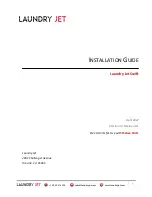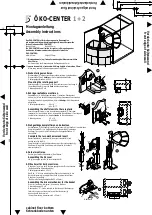
5
EN: FRUITS AND VEGETABLES DEHYDRATOR |
Instruction Manual
can determine the slices size yourself but try to cut them so that they are all of the same size.
The peel and rind role is to protect the fruits and the vegetables but may also prevent good dehydration. During the
dehydration process moisture is best released from the places of cutting or from where damaged products surfaces.
Therefore, the larger the incision area, the faster the dehydration. For this reason, vegetables with stems (such as asparagus,
rhubarb) should be cut lengthwise or diagonally so that their inner sides are as exposed as possible.
Cut the fruits across their core and not lengthwise through the core. Try to cut them into equal flat pieces.
The broccoli heads should be cut into two or four parts depending on their diameter. Strawberries are best cut in half. Even
small fruits should be cut in half or blanched so that their skin can crack slightly.
Loading the device tray.
When placing the products in the dehydrator trays mind that the air must circulate freely in between. You may fill the
entire tray bottom but try to line the products in one row. This is especially important for such products as: banana slices or
pineapple rings. If some pieces turn out to be insufficiently dried after dehydration one of the reasons may probably be the
fact of been covered by other pieces.
During dehydration the products lose moisture and shrink in volume. This saves space for their storage.
Finely chopped products should be stirred once or twice during dehydration in order to ensure that even drying. The
dehydrator must be switched off, with the cable pulled out of the socket, and the trays removed before stirring the products.
When stirring is completed the dehydrator must be reassembled, plugged in, and dehydration continued.
Dehydration time
It is impossible to set an accurate dehydration time for different types of products because it depends on several factors,
namely:
product moisture content;
product pieces thickness or size;
room temperature and humidity;
product density.
The selected products always impact the dehydration time. The term and conditions of products storage also matter, as well
as how they were grown and delivered to you.
As you gain experience, you will learn to determine the required dehydration time.
In order to determine if the products are prepared it is necessary to disconnect from time to time the dehydrator from the
mains and check the various trays. The inspection of products with high moisture content (juicy fruits, meat) should be done
after four hours dehydration. The inspection of products with low moisture content (grasses, leafy vegetables) should be
done after two or three hours dehydration.
Keep in mind that it is better to suck dry the products than to leave them moist. This is due to the fact that products that are
not correctly dehydrated often spoil. If the products are dehydrated and you think they are too brittle or brown in color, then
they are suitable for soups and baked recipes. Although such products recovery may take longer and require more water, it
does not affect their aroma and final quality.
HOW TO USE THE DEHYDRATOR
Basic operations
1.
Place the appliance on a flat, stable, and heat-resistant surface. Make sure that the free space around the appliance is at
least 5 cm.
Prepare the products for drying and place them in the dehydrator sections. Fill up the lower trays first, then the upper ones.
Do not overload the individual product sections.
ATTENTION:
Under no circumstances do not cover the sections central apertures or the lid vents.
Place the dehydrator trays on place and make sure they hold securely on top of each other.






































